Accounting Group Project (Group 9)-2
pdf
School
University of Windsor *
*We aren’t endorsed by this school
Course
BMM-8110
Subject
Business
Date
Jan 9, 2024
Type
Pages
22
Uploaded by BrigadierProtonDog32
GROUP PROJECT (GROUP 9)
Maarisha . (110105545)
Aizaaz Saeed (110116595)
Moses Yusuf (110108921)
Okoro Ezinne Diana (110120433)
Kamrun Nahar (110094266)
Odette School of Business, University of Windsor
Master of Management (BSMM8110-1)
Dr Santanu Mitra
Due Date (02/08/2023)
1. Calculate gross profit margin and net profit margin for 2021 and 2022 and comment on the change in the company’s profitability.
Ans.
Calculation of Gross Profit Margin and Net Profit Margin The gross profit margin is calculated by dividing gross profit by total revenue. Gross Profit Margin = Gross Profit
Total Revenue
×100
Gross Profit Margin for 2021 = 1,954,187
5,562,714
× 100 = 35.13%
Gross Profit Margin for 2022 = 2,277,954
6,200,957
× 100 = 36.73%
Coca-Cola's gross profit margin grew from 35.13% to 36.73% in 2022. A larger gross profit margin is a sign that the company's main business is bringing in more income, which is good news for the business. On the other hand, net profit margin is calculated by dividing net profit by total revenue. Net Profit Margin = Net Profit
Total Revenue
× 100
Net Profit Margin for 2021 = 189,580
5,562,714
× 100 = 3.4%
Net Profit Margin for 2022 = 430,158
6,200,957
× 100 = 6.9%
According to the calculations above, Coca-Cola's net profit margin will be 3.4% in 2021 and 6.9% in 2022. The net profit margin has significantly risen, which shows that the business is making more money as a percentage of sales. The net profit margin has significantly risen, which shows that the business is making more money as a percentage of sales.
2. Locate the note about the company’s marketing program and summarize it.
Ans.
Coca-Cola uses a wide range of sales and distribution channels as part of its complete marketing strategy. Direct sales to grocery stores, mass merchandisers, club stores, convenience stores, and pharmacies are a few examples. Additionally, they aim for local establishments including eateries, schools, amusement parks, and leisure centres. Vending machines also act as points of sale for goods. Coca-Cola relies on new brand and product releases, packaging improvements, and sales promotions to increase sales in the non-alcoholic beverage sector. Their products are typically sold in recyclable, single-use bottles and cans, with various package designs depending on the market. Coca-Cola makes a substantial investment in advertising across a variety of media platforms, including web, television, and radio, which is a key component of its marketing initiatives. To increase product visibility, local sales promotions are also taken into consideration. For the company, preserving or growing income depends on these marketing and merchandising operations. Coca-Cola emphasises a consistent and well-planned charitable giving programme to support the communities they serve, in addition to their marketing and merchandising initiatives. They gave large sums of money to numerous organisations and donor-
advised funds in 2022. Depending on future financial results and commercial considerations, they want to keep making philanthropic donations. 3. Discuss the details about the net income per share (including the calculation part) as discussed by the company in the notes of the financial statements. Ans.
The dividends on the Class B Common Stock shares are not required to be subtracted from net income because it is anticipated that all shares of Class B Common Stock have been converted. Therefore, the Common Stock will receive all of the Undistributed Earnings. According to the
Your preview ends here
Eager to read complete document? Join bartleby learn and gain access to the full version
- Access to all documents
- Unlimited textbook solutions
- 24/7 expert homework help
sentence before, the basic net income per share and the diluted net income per share for common stock and Class B common stock are the same. 4. What is the company’s accounting policy for goodwill as discussed in the notes to the financial statements? Ans.
The Coca-Cola Company assesses the goodwill's recoverability and impairment in line with generally accepted accounting principles (GAAP). During this process, the management team must make decisions and assumptions. The organization computes asset fair values based on these theories and attempts to align them with market expectations. The estimations and presumptions are routinely examined and amended to ensure accuracy and relevance. The Coca-Cola Company has unique goodwill policies in addition to general accounting principles. The corporation accounts for business combinations using the acquisition technique, attributing all goodwill to a specific reporting unit under the Non-alcoholic Beverages segment. The corporation does a goodwill impairment test annually on the first day of the fourth quarter, or more frequently if circumstances point to a likely impairment.
If the estimated fair value of the reporting unit is higher than its carrying value, goodwill is not deemed to be damaged. The excess carrying value of goodwill is written off if the carrying amount, which includes it, is greater than the estimated fair value. 5. What are the company’s policies regarding the amortization of intangible assets?
Ans.
The company follows a policy of amortizing intangible assets on a straight-line basis over their estimated useful lives. The two types of intangible assets mentioned in the disclosure are Distribution Agreements and Customer Lists.
1. Distribution Agreements: The company's distribution agreements are amortized on a straight-line basis, and they have an estimated useful life of 20 to 40 years. The beginning balance of distribution agreements, net, is adjusted for other distribution agreements added during the year and reduced by additional accumulated amortization. The amortization expense for distribution agreements is recorded annually and will continue in future years based on the recorded amounts as of December 31, 2022. Assuming no impairment, the annual amortization expense for distribution agreements will be approximately $25 million for each fiscal year from 2023 through 2027. 2. Customer Lists: The company
’
s customer lists are also amortized on a straight-line basis, and they have an estimated useful life of five to 12 years. The beginning balance of customer lists, net, is adjusted for any additional customer lists added during the year and reduced by additional accumulated amortization. The amortization expense for customer lists is recorded annually and will continue in future years based on the recorded amounts as of December 31, 2022. Assuming no impairment, the annual amortization expense for customer lists will be approximately $2 million for each fiscal year from 2023 through 2027. 6. Describe the company’s policy on depreciation of property plant and equipment.
Ans.
The company's property, plant, and equipment policy The business employs the straight-line depreciation method to determine how much property, plant, and equipment have depreciated. The asset's cost is distributed evenly across its useful life when using the straight-line depreciation technique. Coca-Cola has established a few additional conditions for the depreciation of property, plant, and equipment in addition to the straight-line policy. Depreciation is calculated based on the projected
useful life or the lease period, for example, in the case of leasehold improvements under operating leases. What matters is which phrase is shorter. Routine maintenance, minor replacements, and repair costs, on the other hand, are regarded expenses and are subtracted when they arise. These costs are added to the asset's original value whenever a new addition or replacement of any type is made to the asset. Finally, the cost and accrued depreciation are often deleted from the records when assets are replaced or disposed of. The consolidated statements of operations include any profits or losses attributable to the disposal. Straight-line depreciation is the method Coca-Cola has adopted since it is simple and broadly accepted by accounting standards like GAAP and IFRS.
7. Describe the company’s policy about the allowance for doubtful accounts. Comment on the change in the allowance for doubtful account balance from 2021 to 2022 vis-
à
-vis the change in the balance of gross receivables. You may calculate the percentage of allowance to the gross receivables and look for a change of such percentage over the year 2022 and evaluate. Ans.
(16,119) for 2022, (17,336) for 2021 Allowance for doubtful account 35,786 for 2022 57,737 for 2021 Account receivables
Calculate change in ADA
16,119 - 17,336= -1,217
Cal change in Account Receivables
35,789 – 57,737 = -21,948
Cal change in ADA to Gross Receivables = -1,217/-21,948 *100
= 0.05544
Your preview ends here
Eager to read complete document? Join bartleby learn and gain access to the full version
- Access to all documents
- Unlimited textbook solutions
- 24/7 expert homework help
This shows a percentage decrease in 2021 compared to 2022. This can be attributed to the covid-
19 of 2019 that ravaged the world for about 2 years, while a rise was noticed in 2022. 8. Are the financial statements comparative? Why are comparative statements usually presented? Ans.
The answer is yes, financial statements are typically presented as comparative statements. Comparative financial statements provide financial data from various time periods, often at least two consecutive years. For example, information for the current year (let's say 2022) and the year prior (let's say 2021) may be included in a set of comparative financial statements.
Comparative financial statements are presented for several reasons:
Comparative statements are used by analysts, creditors, and investors to assess a company's performance across time. Stakeholders can compare financial data from various periods to come to informed judgments.
Comparative statements reflect changes in financial metrics across time. It is possible for revenue, costs, profitability, liquidity, and other factors to change. Significant adjustments could be a sign of troubled finances or progress.
Seasonal Trends: The financial health of some enterprises varies from season to season. These tendencies are revealed through comparative statements, which have improved resource allocation and planning throughout history.
Assessing Financial Stability: By comparing balance sheets across time, stakeholders may keep track of the company's asset, liability, and equity positions.
Financial projections and estimates are made with the aid of comparative statements. Trends and patterns can be extrapolated by analysts to forecast performance.
Compliance and Reporting: To demonstrate their financial status and performance over time, several regulatory organizations, like the SEC in the US, require businesses to publish comparative financial statements in their financial reports.
Benchmarking: Evaluate financial reports against those of similar companies or rivals. The financial performance of the business can then be compared to that of its competitors.
9. Are the financial statements consolidated? What does that mean to you? Ans.
According to the financial statement provided, Coca-Cola's financials are indeed consolidated. A parent company and its subsidiaries are represented as one economic entity in consolidated financial statements. As a result, it combines the financial accounts of the main firm and its subsidiaries. Worldwide, The Coca-Cola Company has affiliates and subsidiaries. Distribution, bottling, and other subsidiaries could be listed. The performance of each subsidiary may be shown in the financial accounts. To understand the entire corporate group's business activities and financial performance, consolidated financial statements are required. Without consolidation, the parent company's financial statements wouldn't accurately depict the financial status and performance of the Coca-Cola business group. 10. Is this a retail, financial or manufacturing company? Ans.
The Coca-Cola Company's major line of business is manufacturing. With Coca-Cola as its signature beverage, it is one of the largest beverage companies in the world and is well known for developing and advertising non-alcoholic beverage products.
Coca-Cola is a producer of carbonated soft drinks, bottled water, fruit juices, energy drinks, and ready-to-drink teas and coffees. Coca-Cola also makes, bottles, and distributes these beverages.
11. How many kinds of revenues are reported? How many kinds of expenses are reported? Ans.
Reported Revenues
1.
Net Sales Revenue
2.
Gross Sales Revenue
3.
Royalty and Licensing Revenue
4.
Interest and Investment Income
5.
Dividend Income
Expenses
1.
Cost of Goods (COGS)
2.
Selling, General and Administrative Expenses (SG&A)
3.
Interest Expense
4.
Income Tax Expense
5.
Depreciation and Amortization
6.
Research and Development Expenses 7.
Other operating expenses
12. What were interest expense and interest revenue items reported on the income statement? Ans. Interest Expense Items
1.
Interest on Loans
Your preview ends here
Eager to read complete document? Join bartleby learn and gain access to the full version
- Access to all documents
- Unlimited textbook solutions
- 24/7 expert homework help
2.
Interest on Bonds 3.
Interest on Debentures
4.
Interest on Notes Payable
5.
Interest on Montages 6.
Interest on Capital Leases
Interest Revenue Items
1.
Interest on Investment 2.
Interest on Loan Receivables
3.
Interest on Bank Deposits
4.
Interest on Montage receivables 5.
Interest on customer Financing.
13.
Were any unusual or infrequently occurring items reported on the income statements of 2022 and 2021? Ans.
The income statements for 2022 and 2021 did not contain any unexpected or occasionally occurring items.
14.
Was there any indication or discussion of accounting change (either change in accounting policy or accounting estimate)? If so, explain how it was reported and what type of change it was.
Ans.
There were no mentions of any changes in accounting policies or estimations in the Coca-
Cola Company's 2022 annual financial statements. There were no disclosed amendments or
adjustments to the company's consolidated financial statements that were prepared in accordance with generally accepted accounting standards in the United States ("GAAP"). No accounting adjustments were made, which suggests that the firm continuously used the same accounting principles and projections as in the prior reporting quarter. This uniformity guarantees that the financial statements stay similar and gives stakeholders trustworthy and useful information for making decisions. The financial accounts specifically mention that GAAP was recognized in all categories, including fair value adjustments, property, plant, and equipment (PPE), and assets held for sale (ADA). 15. What was the net profit margin in 2022 and 2021?
Ans.
We can calculate the net profit margin for the years 2022 and 2021 as follows. Net Profit Margin 2022 = Net Income 2022 / Net Sales 2022 = 430,158 / 6,200,957 = 6.94% Net Profit Margin 2021 = Net Income 2021 / Net Sales 2021 = 189,580 / 5,562,714 = 3.41%
By dividing each year's net income by net sales, one may get the net profit margin for 2022 and 2021. The net profit margin increased from 3.41% in 2021 to 6.94% in 2022. This shows that the business was more profitable in 2022 than it was the year before. Higher net sales, greater gross profit, and decreased other expenditures, net, are all reasons for the growth in net profit margin. However, it is crucial to evaluate the company's net profit margin in comparison to sector benchmarks and other businesses in the same field to have a more thorough understanding of its performance.
16. What was the primary depreciation methods used for accounting purposes?
Ans.
Depreciation Method Coca-Cola has used straight line depreciation method for the accounting purpose. It means that the same amount of depreciation expense is recognized in each accounting
period.
17. What was the amount of income tax expense for 2022?
Ans.
When compared to the year before, 2021, the company's reported income tax cost for the year 2022 came to $144,929, up from $65,569 in the prior year. An important component of the firm's financial statements is the income tax expense, which gives information on the amount of taxes the company must pay depending on its taxable revenue for a certain time period. The technique of calculating income tax costs is thorough. When calculating its taxable income, which is the net income obtained after subtracting all permissible costs, credits, and adjustments in accordance with the current tax regulations, the corporation applies the appropriate tax rates. To guarantee compliance with accounting standards and tax laws, it's critical for businesses to appropriately calculate and report income tax costs.
The cash flow and financial success of the organisation are significantly impacted by the income tax expenditure. It has a direct impact on the company's net income that is made accessible to shareholders or owners after paying taxes since it is a component of pre-tax earnings that was set aside for tax obligations. Effective income tax cost management is essential to a business's financial stability and long-term performance. Companies may be able to reduce tax liabilities and improve their profitability by comprehending the effects of taxes and optimising tax tactics. Investors and stakeholders also carefully examine income tax expenditure to determine the company's tax efficiency and assess its capacity to produce long-term profits.
Your preview ends here
Eager to read complete document? Join bartleby learn and gain access to the full version
- Access to all documents
- Unlimited textbook solutions
- 24/7 expert homework help
18. In 2022, what was the total amount of cash dividends declared on common stock and preferred stock?
Ans.
The business made the decision to distribute its profits to its shareholders in the form of cash dividends in 2022. They announced a $4.50 per share dividend for both the common stock and the class b common stock. Each shareholder earned $1.00 for each share they owned when the dividends were really paid. Throughout the course of 2022, the corporation paid out cash dividends totaling $9.4 million. And what's this? They also carried out the same action in the years 2020 and 2021 before that!
19. Did the auditor’s report express any adverse opinion on the financial statements? Explain.
Ans. No, the auditor's report did not express any adverse opinion on the financial statements. The report stated that the consolidated financial statements were prepared in accordance with generally accepted accounting principles in the United States of America, and they fairly represented the financial position of the company as of December 31, 2022, and 2021, as well as the results of its operations and cash flows for each of the three years ending December 31, 2022.
The auditor also confirmed that the company had effective internal control over financial reporting as of December 31, 2022, based on the criteria established in the Internal Control-
Integrated Framework (2013) issued by the Committee of Sponsoring Organizations of the Treadway Commission (COSO). This means that the company had proper procedures and systems in place to ensure the accuracy and reliability of its financial
reporting.
20. Did the company present a single statement of comprehensive income or two separate statements of income and comprehensive income? What are the numbers?
Ans.
The company presented two separate statements: (1) the consolidated statement of operations (income statement), which shows the company’s financial performance in terms of net income, and (2) the consolidated statement of comprehensive income, which includes net income and other comprehensive income adjustments to arrive at comprehensive income.
Here are the numbers from the consolidated statements for 2022 and 2021:
Fiscal Year 2022:
•
Net Income: $430,158
•
Other Comprehensive Income, Net of Tax: $15,626
•
Comprehensive Income for 2022: Net Income ($430,158) + Other Comprehensive Income
•
($15,626) = $445,784
•
Fiscal Year 2021:
•
Net Income: $189,580
•
Other Comprehensive Income, Net of Tax: $18,590
Comprehensive Income for 2021: Net Income ($189,580) + Other Comprehensive Income
($18,590) = $208,170
The comprehensive income represents the total financial performance of the company, including net income and other comprehensive income items such as gains and losses from changes in pension plans, postretirement benefit plans, interest rate swaps, and foreign currency translation adjustments.
21. What were other comprehensive income adjustments with net income to arrive at comprehensive income?
Ans. Assets Funded by Equity and Debt In 2022, the total asset value of Coca-Cola amounted to $3,709,545,000. Out of this total, $2,594,157,000 (equivalent to 69.93%) was financed through debt, comprising both current liabilities and long-term liabilities. The remaining portion of the asset, worth $1,115,388,000 (equivalent to 30.07%), was funded by equity.
However, in 2021, the total asset value was $3,445,570,000. At that time, $2,733,784,000 (approximately 79.34%) was funded through debt, and the remaining $711,786,000 (20.66%) was financed by equity. The summary of these figures is as follows: 2022
2021
Debt
$ 2,594,157,000
69.93%
$ 2,733,784,000
79.34%
Equity
$ 1,115,388,000
30.07%
$ 711,786,000
20.66%
Total Asset
$ 3,709,545,000
100.00%
$ 3,445,570,000
100.00%
Based on the provided table, it is evident that Coca-Cola primarily finances its assets through debt. However, there were notable discrepancies between 2021 and 2022. In 2021, approximately 80% of the assets were funded by debt, which decreased to nearly 70% in 2022. Conversely, the percentage of equity funding increased from 20% in 2021 to 30% in 2022.
22. Did Coca-Cola increase total common dividend payment in 2022 relative to the previous two years? If so, by how much?
Ans.
Yes, Coca-Cola increased the common dividend payment in 2022 relative to 2021 and 2020.
Your preview ends here
Eager to read complete document? Join bartleby learn and gain access to the full version
- Access to all documents
- Unlimited textbook solutions
- 24/7 expert homework help
This was due to the increase in the company annual dividends per share: $1.64, $1.68 and $1.76 in 2020, 2021 and 2022 respectively. In 2022, Coca-Cola’s annual common stock dividends amounted to $7,616 million, reflecting a 5.02% increase compared to the dividends paid in 2021, which were $7,252 million. Similarly, in 2021, the dividends represented a 2.91% increase from the previous year’s dividends in 2020.
23. Did the company use direct or indirect method of presenting its statement of cash flows?
Ans.
As the cash flow on page 40 shows, Company used indirect method in which net income is adjusted for non-cash transactions, for any deferrals or accruals of past or future operating cash receipts or payments, and for items of income or expense associated with investing or financing cash flows.
24. What was the amount of cash provided by operations? What was the amount of cash used in investing activities of the company?
Ans.
Cash generated by operating activities $554,506. Cash used in investing activities $324,985.
25. What were the major financing cash flows? Discuss the amounts.
Ans.
The early repayment of senior notes and the repayment of debt were the two main financing cash flows for the company in 2022, according to the information presented. The sums are broken down as follows:
1. Net Debt Repayments: Compared to 2022, the company's net debt repayments were higher in 2021. The cash used for financing activities decreased by $98.1 million as a result, albeit exact figures are not given. It implies that the business will make fewer net debt repayments in 2022.
2. Early Senior Note Repayment: In 2022, the corporation paid off $125 million in Senior Notes early. The corporation made this repayment to lower its debt commitments and improve its balance sheet. An important financing move that shows the company's dedication to debt reduction is the early repayment of senior notes. The net repayment of debt and the early repayment of senior notes, two financing cash flows, were the main drivers of the change in cash used in financing activities. The presented information does not specifically state the precise amount of net debt repayments in 2021 or 2022, but it does draw attention to the decline in cash required for financing activities in 2022 that is principally brought on by this decline in net debt repayments.
26. What are the major investing cash outflows? Discuss the amounts.
Ans.
Major Investing Cash Outflows
During the year 2022, Coca-Cola has used $324,985,000 on investment activities which was only $161,943,000 in 2021. It is clearly seen that they have increased their investment activities in 2022 compared to 2021. The major investment was in addition to property, plant and equipment which was around $298,611,000. Along with this, there was another investment of $30,649,000 to acquire distribution rights. Lastly, Coca-Cola also invested in Cona Services LLC for around $3,094,000 which is an IT service company.
27. How much cash generated from operations (CFO) was utilized in investment and financing activities?
Ans.
In 2022, cash generated from operations was $ 554.5 million, marking a $ 32.8 million increase compared to the previous year.
The cash used in investing activities for 2022 was $ 325 million.
The cash used in financial activities for 2022 was $ 174.2 million.
28. Show the reconciliation between net income and its sub-components into accruals and cash flows. What was the trend of these three things that you noticed over the three years 2022, 2021, and 2020? Was the trend healthy? (Hint: Net income = Total accruals + operating cash flows)
Ans.
Based on tables on page 40, the net income over the three years 2022, 2021 and 2020 respectively are $554.506, $521.755, and $494.461 so it rises by 5.5 percent from 2020 to 2021 and by 6 percent for the next year and as the cash flow of operating activities
is continually positive, the trend is healthy.
29. Calculate the following ratios for the years 2022 and 2021, and comment on the change during the year 2022:
a) Current ratio.
b) Quick ratio.
c) Days to sell.
d) Receivable turnover ratio.
e) Days to collect.
f) Fixed assets turnover ratio.
Your preview ends here
Eager to read complete document? Join bartleby learn and gain access to the full version
- Access to all documents
- Unlimited textbook solutions
- 24/7 expert homework help
g) Debt-to-assets ratio.
h) Times interest earned ratio.
Ans.
To calculate the requested ratios, we’ll use the information from the Consolidated.
Balance Sheets and some additional data from the Consolidated Statements of Operations.
Here are the calculations for each ratio for the years 2022 and 2021, along with comments on the changes in 2022:
a) Current Ratio: Current Ratio = Current Assets / Current Liabilities
2022: Current Assets = $1,245,801 Current Liabilities = $905,156 Current Ratio =
$1,245,801 / $905,156 ≈ 1.38
2021: Current Assets = $1,076,662 Current Liabilities = $834,856 Current Ratio =
$1,076,662 / $834,856 ≈ 1.29
Comment: The current ratio increased from 1.29 in 2021 to 1.38 in 2022. This indicates that the company’s liquidity position improved in 2022, as it had more current assets relative to its current liabilities. A higher current ratio is generally a positive sign, as it shows the company is better equipped to cover its short-term obligations.
b) Quick Ratio: Quick Ratio = (Cash and Cash Equivalents + Accounts Receivable) / Current
Liabilities
2022: Cash and Cash Equivalents = $197,648 Accounts Receivable = $532,047 Quick Ratio
= ($197,648 + $532,047) / $905,156 ≈ 0.80
2021: Cash and Cash Equivalents = $142,314 Accounts Receivable = $472,270 Quick Ratio
= ($142,314 + $472,270) / $834,856 ≈ 0.74
Comment: The quick ratio increased from 0.74 in 2021 to 0.80 in 2022. This improvement indicates the company’s ability to cover its current liabilities with its most liquid assets
(Cash and accounts receivable) strengthened during 2022.
c) Days to Sell (Inventory Turnover): Days to Sell = 365 days / Inventory Turnover Ratio
Inventory Turnover Ratio = Cost of Sales / Average Inventory
2022: Cost of Sales = $3,923,003 Average Inventory = ($347,545 + $302,851) / 2 ≈ $325,198
Inventory Turnover Ratio = $3,923,003 / $325,198 ≈ 12.07
Days to Sell = 365 days / 12.07 ≈ 30.24 days
2021: Cost of Sales = $3,608,527 Average Inventory = ($302,851 + $342,868) / 2 ≈ $322,860
Inventory Turnover Ratio = $3,608,527 / $322,860 ≈ 11.18
Days to Sell = 365 days / 11.18 ≈ 32.66 days
Comment: The days to sell inventory decreased from 32.66 days in 2021 to 30.24 days in
2022. This indicates that the company was able to sell its inventory more quickly in 2022, which is a positive sign as it reduces the holding period and associated costs.
d) Receivable Turnover Ratio: Receivable Turnover Ratio = Net Sales / Average Accounts
Receivable
2022: Net Sales = $6,200,957 Average Accounts Receivable = ($532,047 + $472,270) / 2 ≈
$502,159 Receivable Turnover Ratio = $6,200,957 / $502,159 ≈ 12.35
2021: Net Sales = $5,562,714 Average Accounts Receivable = ($472,270 + $457,737) / 2 ≈
$464,004 Receivable Turnover Ratio = $5,562,714 / $464,004 ≈ 12.01
Comment: The receivable turnover ratio increased slightly from 12.01 in 2021 to 12.35 in 2022. This indicates that the company collected its receivables more efficiently in 2022, which is a positive trend.
e) Days to Collect: Days to Collect = 365 days / Receivable Turnover Ratio
2022: Days to Collect = 365 days / 12.35 ≈ 29.58 days
2021: Days to Collect = 365 days / 12.01 ≈ 30.41 days
Comment: The days to collect decreased from 30.41 days in 2021 to 29.58 days in 2022. This means that the company reduced the time it takes to collect its receivables, which is a positive development. f) Fixed Assets Turnover Ratio: Fixed Assets Turnover Ratio = Net Sales / Average Fixed
Assets
2022: Net Sales = $6,200,957 Average Fixed Assets = ($1,183,730 + $1,030,688) / 2 ≈
$1,107,209 Fixed Assets Turnover Ratio = $6,200,957 / $1,107,209 ≈ 5.59
2021: Net Sales = $5,562,714 Average Fixed Assets = ($1,030,688 + $1,099,426) / 2 ≈
$1,065,057 Fixed Assets Turnover Ratio = $5,562,714 / $1,065,057 ≈ 5.22
Comment: The fixed assets turnover ratio increased from 5.22 in 2021 to 5.59 in 2022. This indicates that the company generated more revenue for each dollar invested in fixed assets in
2022, which is a positive trend.
g) Debt-to-Assets Ratio: Debt-to-Assets Ratio = Total Liabilities / Total Assets
2022: Total Liabilities = $2,594,157 Total Assets = $3,709,545 Debt-to-Assets Ratio =
$2,594,157 / $3,709,545 ≈ 0.70
2021: Total Liabilities = $2,733,784 Total Assets = $3,445,570 Debt-to-Assets Ratio =
$2,733,784 / $3,445,570 ≈ 0.79
Comment: The debt-to-assets ratio decreased from 0.79 in 2021 to 0.70 in 2022. This suggests that the company reduced its reliance on debt to finance its assets in 2022, which is generally considered a positive sign as it indicates improved financial stability.
h) Times Interest Earned (Interest Coverage) Ratio: Times Interest Earned Ratio = Operating
Income (EBIT) / Interest Expense
Your preview ends here
Eager to read complete document? Join bartleby learn and gain access to the full version
- Access to all documents
- Unlimited textbook solutions
- 24/7 expert homework help
2022: Operating Income (EBIT) = $662,420 Interest Expense = $30,170 Times Interest
Earned Ratio = $662,420 / $30,170 ≈ 21.96
2021: Operating Income (EBIT) = $345,512 Interest Expense = $28,802 Times Interest
Earned Ratio = $345,512 / $28,802 ≈ 12.00
Comment: The times interest earned ratio increased from 12.00 in 2021 to 21.96 in 2022. This significant improvement indicates that the company’s operating income is now more than sufficient to cover its interest expenses, signifying a stronger financial position and reduced financial risk.
Overall, the company’s financial performance and position improved in 2022 across several key ratios, which is generally positive and indicates effective management of resources and financial health.
Your preview ends here
Eager to read complete document? Join bartleby learn and gain access to the full version
- Access to all documents
- Unlimited textbook solutions
- 24/7 expert homework help
Related Documents
Recommended textbooks for you

BUSN 11 Introduction to Business Student Edition
Business
ISBN:9781337407137
Author:Kelly
Publisher:Cengage Learning
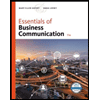
Essentials of Business Communication (MindTap Cou...
Business
ISBN:9781337386494
Author:Mary Ellen Guffey, Dana Loewy
Publisher:Cengage Learning
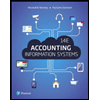
Accounting Information Systems (14th Edition)
Business
ISBN:9780134474021
Author:Marshall B. Romney, Paul J. Steinbart
Publisher:PEARSON
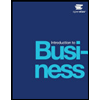
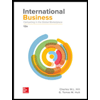
International Business: Competing in the Global M...
Business
ISBN:9781259929441
Author:Charles W. L. Hill Dr, G. Tomas M. Hult
Publisher:McGraw-Hill Education
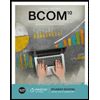
Recommended textbooks for you
 BUSN 11 Introduction to Business Student EditionBusinessISBN:9781337407137Author:KellyPublisher:Cengage Learning
BUSN 11 Introduction to Business Student EditionBusinessISBN:9781337407137Author:KellyPublisher:Cengage Learning Essentials of Business Communication (MindTap Cou...BusinessISBN:9781337386494Author:Mary Ellen Guffey, Dana LoewyPublisher:Cengage Learning
Essentials of Business Communication (MindTap Cou...BusinessISBN:9781337386494Author:Mary Ellen Guffey, Dana LoewyPublisher:Cengage Learning Accounting Information Systems (14th Edition)BusinessISBN:9780134474021Author:Marshall B. Romney, Paul J. SteinbartPublisher:PEARSON
Accounting Information Systems (14th Edition)BusinessISBN:9780134474021Author:Marshall B. Romney, Paul J. SteinbartPublisher:PEARSON
 International Business: Competing in the Global M...BusinessISBN:9781259929441Author:Charles W. L. Hill Dr, G. Tomas M. HultPublisher:McGraw-Hill Education
International Business: Competing in the Global M...BusinessISBN:9781259929441Author:Charles W. L. Hill Dr, G. Tomas M. HultPublisher:McGraw-Hill Education

BUSN 11 Introduction to Business Student Edition
Business
ISBN:9781337407137
Author:Kelly
Publisher:Cengage Learning

Essentials of Business Communication (MindTap Cou...
Business
ISBN:9781337386494
Author:Mary Ellen Guffey, Dana Loewy
Publisher:Cengage Learning

Accounting Information Systems (14th Edition)
Business
ISBN:9780134474021
Author:Marshall B. Romney, Paul J. Steinbart
Publisher:PEARSON


International Business: Competing in the Global M...
Business
ISBN:9781259929441
Author:Charles W. L. Hill Dr, G. Tomas M. Hult
Publisher:McGraw-Hill Education
